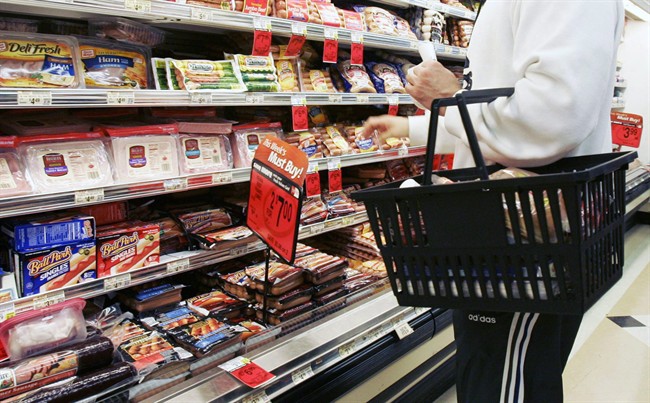OTTAWA – Statistics Canada says its consumer price index was up 1.3 per cent in September compared with a year ago.

That indicates slightly higher inflation compared with August when the index was up 1.1 per cent.
Statistics Canada says prices were up in all eight major components that it tracks, with the shelter and transportation sectors contributing the most to rise.
The transportation index gained 2.3 per cent compared with a year ago, while the shelter category was up 1.7 per cent.
READ MORE: Lower fuel prices drag down Canada’s inflation rate in August
Food prices were up 0.1 per cent, the sector’s smallest year-over-year increase since February 2000.
Food from stores posted their first year-over-year decline since March 2008 as they fell 0.9 per cent. Food from restaurants was up 2.5 per cent.
The Bank of Canada’s core index, which excludes some of the most volatile components, increased 1.8 per cent compared with a year ago, matching the gain in August.

The core inflation was in line with analyst estimates but overall inflation was below the estimated 1.5 per cent, according to Thomson Reuters.
Prices were up more on a year-over-year basis in September than in August in every province except Alberta and British Columbia where they posted smaller increases.
READ MORE: Inflation rate drops to 1.3% in July amid lower fuel prices, higher food costs
Statistics Canada also reported Friday that retail sales fell 0.1 per cent to $44.0 billion in August due to lower sales at motor vehicle and parts dealers, and general merchandise stores.
Sales were down in seven of 11 subsectors, representing 57 per cent of retail trade.
Motor vehicle and parts dealers saw sales fall 0.5 per cent in the month due to weaker sales at new car dealers which fell 1.1 per cent and a 0.6 per cent drop at used car dealers. General merchandise stores reported a 0.9 per cent drop.
Retail sales fell in six provinces in August with Ontario posting the largest drop in dollar terms as it fell 0.7 per cent.



Comments